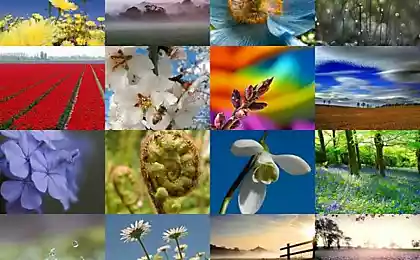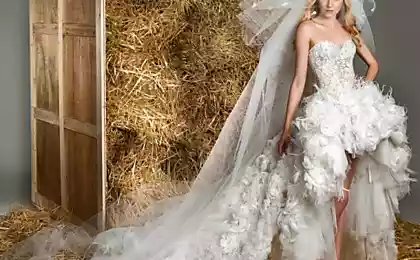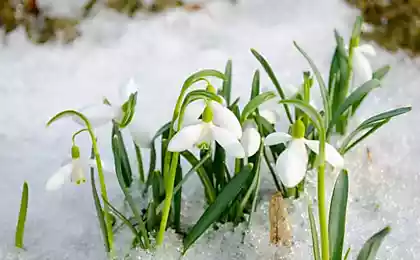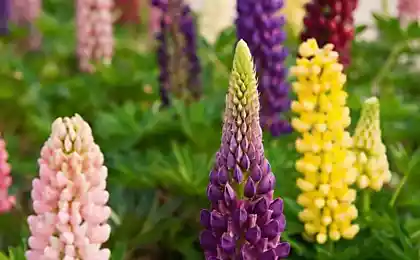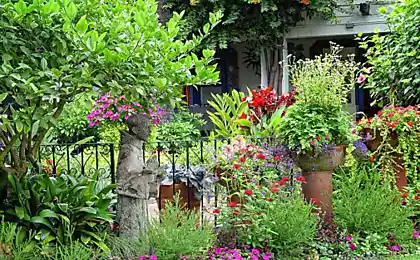234
The first flowers of spring
The fact that botany considers only Galanthus to be a true snowdrop does not prevent people from different regions of our country from calling a variety of different names by this familiar name. primer.
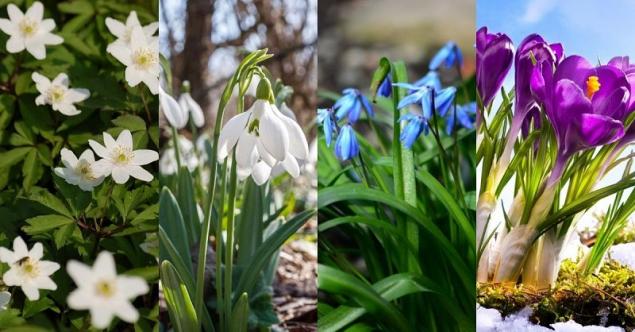
"Site" I decided to restore justice and acquaint readers with the real names of small but brave messengers of spring, who are the first to wake up from their winter sleep to please us with their discreet beauty.
The first flowers of spring
Snowdrops are listed in the Red Book and are under the protection of the state, but growing them on your garden plot is not difficult. The first spring flowers multiply quite small (up to 3 centimeters in diameter), covered with yellowish scales bulbs.

They prefer wet and rich in minerals. For good growth of plants, the soil should be unflooded, since due to excess moisture in the soil, galanthus can die.
Do not dig halanthus in the forest or forest park areas, because it is because of the barbaric attitude to these first spring flowers they are recognized as an endangered species. It is best to contact a specialized plant store and buy snowdrop bulbs there.
Despite environmental warnings and administrative responsibilities, people tear snowdrops every year to sell and buy, often bringing home already hopelessly wilted. Do not pick, buy and accept as a gift of flowers.
For residents of private houses and owners of cottages, spring is a special time when the most daring ideas can be embodied on the site, turning the world around into a magical garden, a lush flower garden or an unusual park. Our editors have prepared for you a selection of the most beautiful ideas for the design of spring flower beds.
Perhaps you will be surprised, but in many countries the ordinary dandelion is called yellow ginseng, because its useful properties, it turns out, are no less than that of the real root of life.

"Site" I decided to restore justice and acquaint readers with the real names of small but brave messengers of spring, who are the first to wake up from their winter sleep to please us with their discreet beauty.
The first flowers of spring
- Snowdrop (Galanthus)
The English call it a snowdrop, the Germans call it a bell, and we call it a snowdrop. Real snowdrops.They were thought to be like drops of milk hanging down. Hence the Latin name Galanthus, which means milky white flower.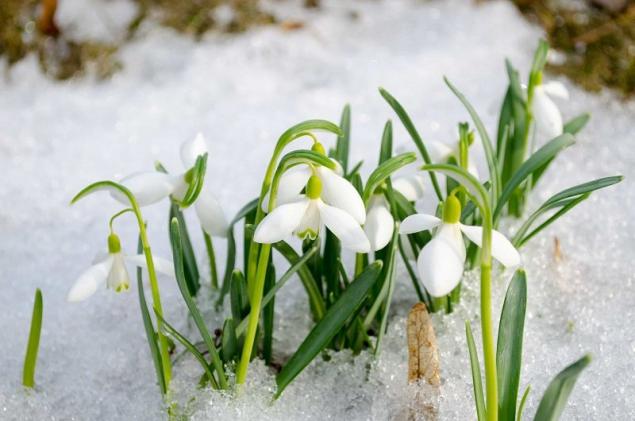
Galanthus appear from under the snow in February and bloom for about a month, tolerate temperature changes well and are not afraid of spring frosts. Their flowers are a symbol of spring, purity and hopes for a bright future.
Ancient legend says that snowdrops first became the embodiment of hope for Adam and Eve when they were expelled from the Garden of Eden. Eva thought that the cold winter would never end, but an angel appeared and turned snowflakes into flowering snowdrops, giving her hope for spring and warmth. - Prolesca (Scilla)
Many people confuse snowdrops with snowdrops, calling the latter blue snowdrops, although we are talking about completely different from a botanical point of view colors. People believe that if you find a splash on the Annunciation or Easter, you need to put it under the icons for happiness.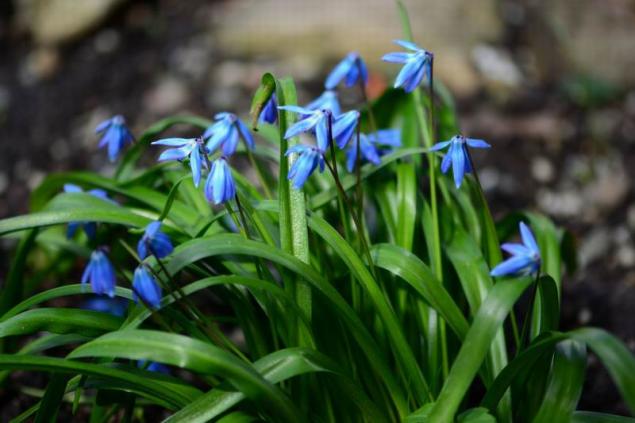
In the forests of the European part of Russia, you can most often find two types of grasses: Siberian and two-leaved. Flowers at the splash are usually blue, but there are also pink, white, purple.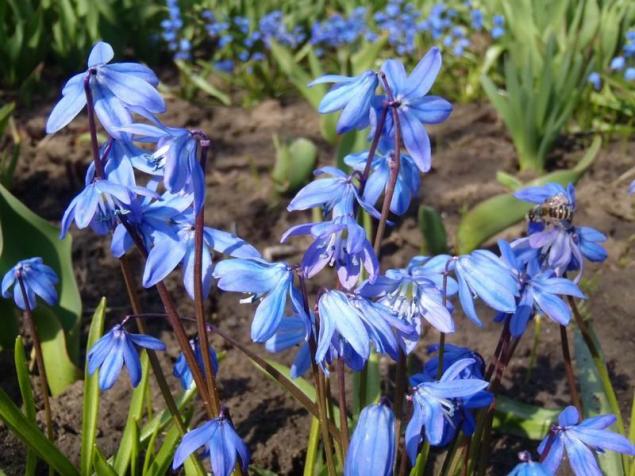
- A chicken or anemone (Anemone)
Amazing with its grace and fragility, the windmill is one of the first heralds of spring. As soon as the snow falls, these lovely delicate flowers cover the space under the canopy of the forest with a solid white carpet. Tender petals sway from the slightest breath of wind, hence the name "window".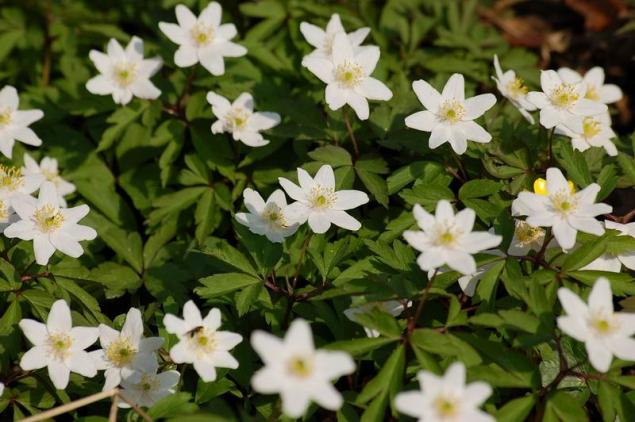
In the north-west of Russia, it is the winddrop that is most often called a snowdrop. This plant is under state protection and is listed in the Red Book of Moscow, Belgorod, Bryansk, Vladimir, Vologda and other regions. - Whiteflower (Leucojum)
In nature there are a lot of plants, which sometimes can only be distinguished by a specialist. One of these pairs is white and snowdrop. Indeed, both have small snow-white flowers, and they bloom almost simultaneously, in early spring, sometimes appearing directly from under the snow.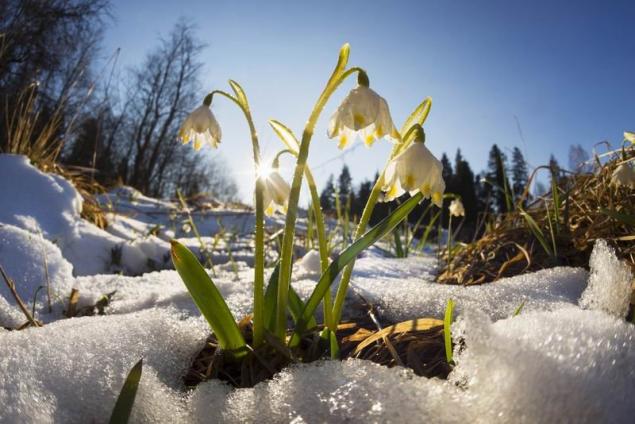
You can suspect that the white flower is one of the types of snowdrops. But no, these are two completely different plants, although both are bulbous. White flowers, unlike the favorites of the Queen from “12 months” can decorate your garden not only in early spring. There are summer and even autumn varieties.
- Crocus, or saffron (Crocus)
Crocuses are favorite flowers of gardeners and gardeners. The crocuses bloomed, so spring has come. Many of the crocuses are now rare and listed in the Red Book.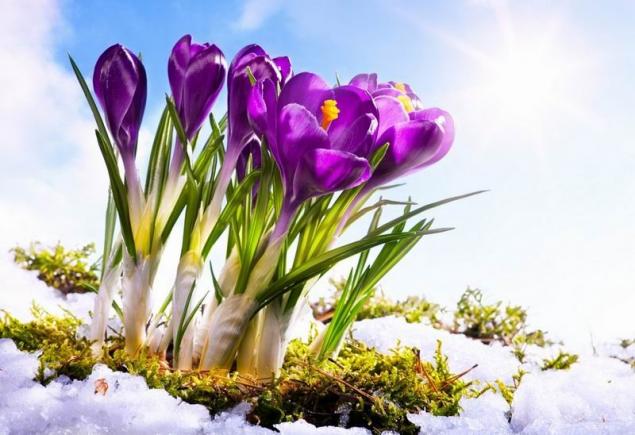
In Kyrgyzstan and Kazakhstan, the snowdrop is called Alatau saffron (Crocus alatavicus). This is the first flower that appears in the spring in the foothills, and real snowdrops from the genus Galanthus can exist there only in artificial conditions.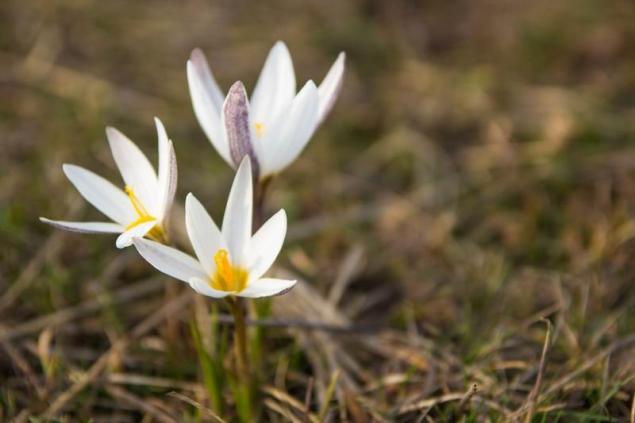
- Frost, or wintering (Helleborus)
Frost is called “Christmas rose” and “Christ flower”. Evergreen freezer is not only frost-resistant, but also drought-resistant, and its flowering in the middle lane begins in March.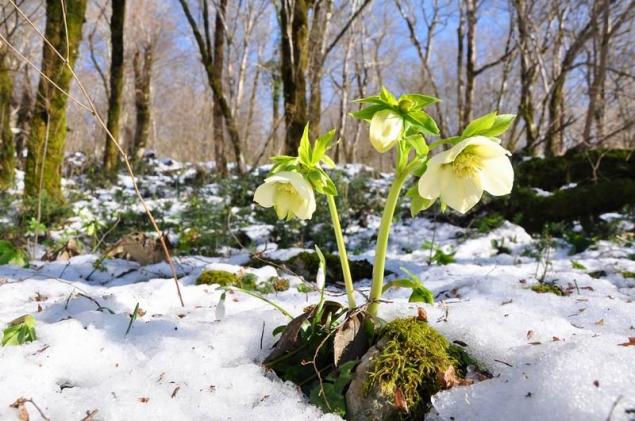
The legend of the freezer says that after learning about the birth of the Savior, the shepherds of Bethlehem decided to bring him gifts. Everyone gathered what they could, and only one shepherd could not find a worthy gift. Severely grieved, he wept, and in the place where his tears fell, a beautiful flower grew, which became a gift to the infant Christ.
- The liver (Hepatica)
The noble liver blossoms in mid-April, almost simultaneously with the mother-and-stepmother, when there may still be snow on the ground. Its delicate blue flowers bloom along the banks of rivers, on the slopes of ravines, along the edges of forests and on the flower beds of gardeners.
Medieval healers drew attention to the leaves of the plant, resembling the liver, and used them in the treatment of diseases of this organ. Nowadays, the liver is also considered a medicinal plant. Its infusions (teas) traditional medicine uses for problems with the liver and gallbladder. - Violet (Viola)
Violet is the favorite flower of various peoples. There are poems and legends about it. It is considered a symbol of tenderness, modesty and innocence. There are more than 450 species of violets distributed around the globe. The earliest of them bloom as soon as the snow melts: Altai, fragrant, klobuchkov, marsh, amazing, tricolor, hilly ...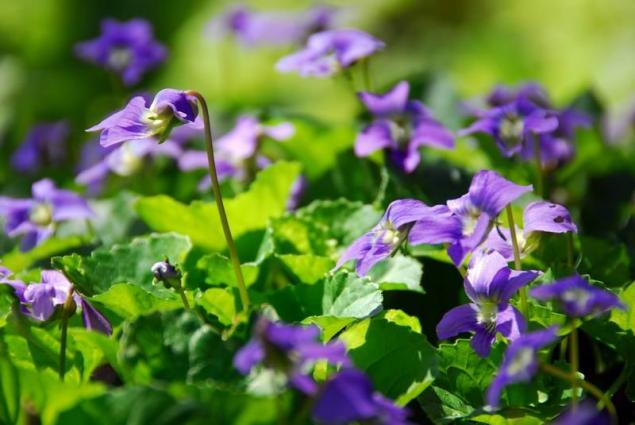
- Spring (Eranthis)
Veschennik is an evergreen plant, which got its name due to early flowering. This feature relates him to the snowdrop - the undisputed leader of primrose. Bright golden-yellow spring flowers appear in the period of melting snow, in March. The only large flower is located on the top of an elevated shoot 10-12 cm high.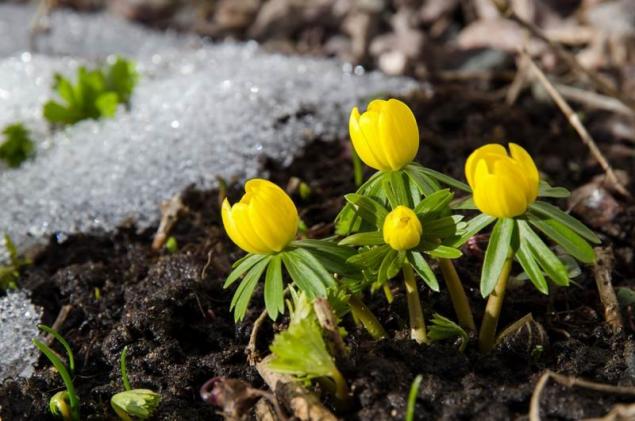
- Medunica (Pulmonaria)
A distinctive feature of this primrose is that in its inflorescences you can see both pink and dark blue flowers. Of all the above plants, this species is the most durable, its lifespan is about 30 years.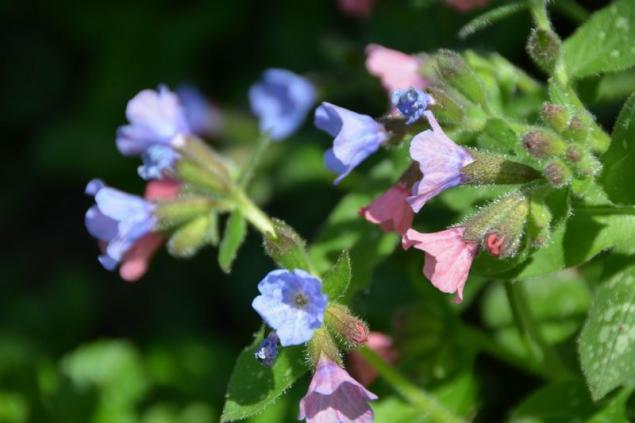
The most common type of jellyfish is the obscure jellyfish (Pulmonaria obsuera). It blooms early, when there are no foliage on the trees and shrubs, and the grassy forest litter is only beginning to turn green. - Mother-and-stepmother (Tussilago)
The Russian name arose because of the peculiarity of the leaves of the mother-and-stepmother: the lower side is fluffy and soft - "mother", and the upper smooth and cold - "stepmother". This plant has another rather rare feature - its flowers appear before the leaves. For this, the English call mother-and-stepmother “son before father.” Traditional medicine recognizes and widely uses mother-and-stepmother for the treatment of colds, coughs, tuberculosis, goldfish and purulent wounds.
- Muscari (Muscari)
Muscari, or mouse hyacinth, is a perennial bulbous plant. Its tiny bell flowers are collected in carp-shaped inflorescences of blue, blue, purple or white, depending on the species. In nature, the plant is found on forest edges, among shrubs, on the slopes of mountains in Southern Europe, the Caucasus, in the Crimea.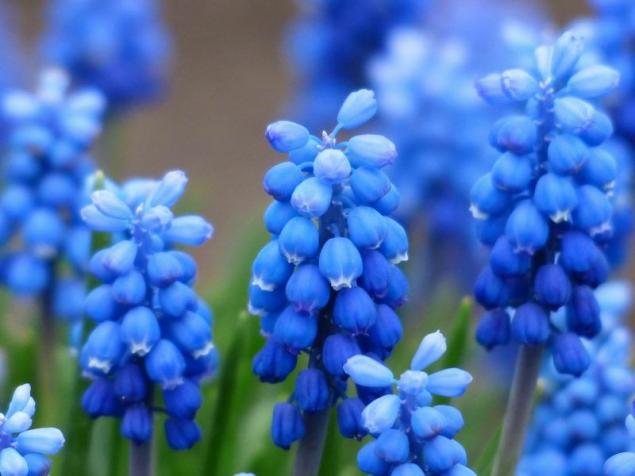
- Goose onions (Gagea)
Folk names: bird onion, yellow caterpillar, yellow snowdrop, viper onion, yellow color. Yellow snowdrops bloom in early spring, in April. Its yellow star-shaped flowers cover mountain meadows, crushed slopes and cracked rocks in spring, found in deciduous forests.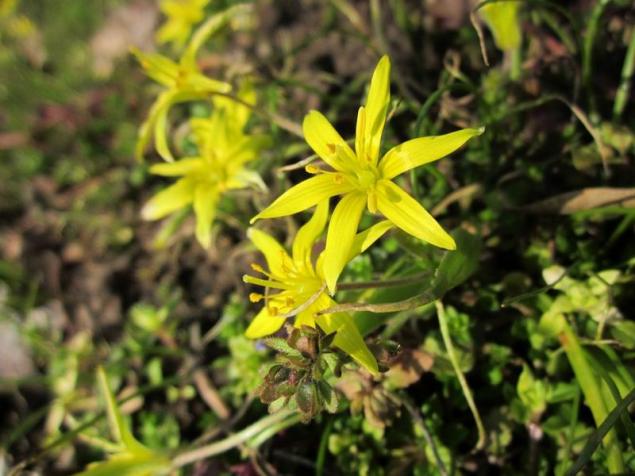
- Shot or Sleep Grass (Pulsatilla patens)
When the last winter snow still lies in the forests, unusual flowers appear in places on the thawed ground, similar to small tulips, purple-purple with a yellow middle, a fluffy stalk and fluffy leaves.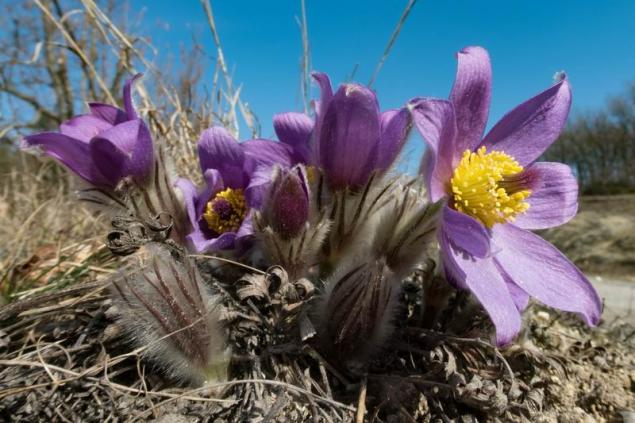
With sleep herb in different peoples associated legends and tales, which is reflected in the name. According to popular beliefs, shooting helps from the evil eye and damage, and if you wear grass with you, you will protect yourself from evil machinations and misfortunes.
- Kaluzhnica (Caltha)
In sunny places, where there is a lot of moisture, the swamp bog feels great. Its bright yellow large flowers bloom in early spring, and flowering lasts about a month.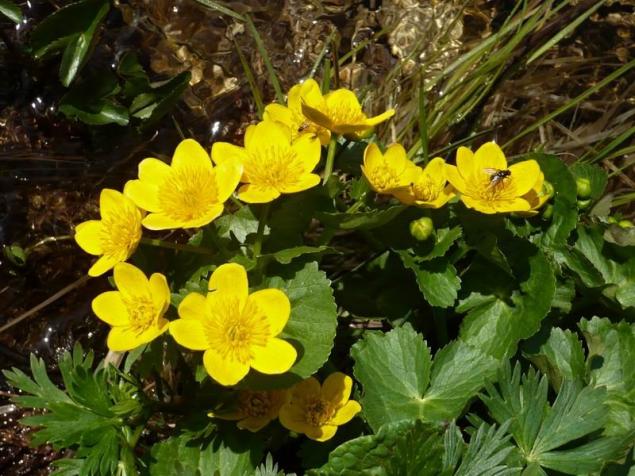
- Primrose or primrose (Primula)
The word "primrole" comes from the Latin "prim" - the first, because these flowers bloom before many others.
- Pervinok (Vinca)
Evergreen wine retains its foliage even under the snow. As soon as the soil begins to thaw, it forms new shoots, and in April it is covered with delicate blue flowers.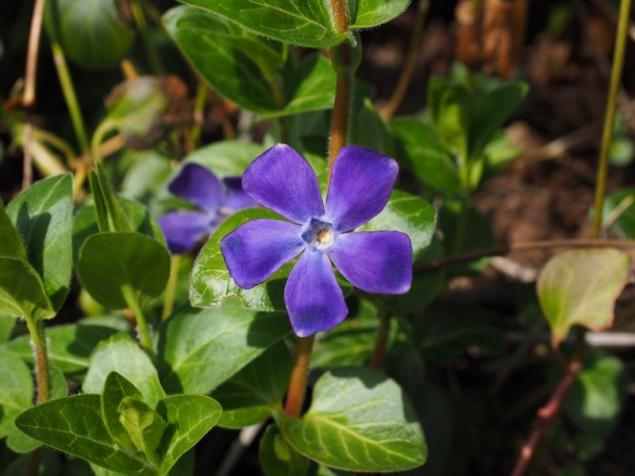
- Adonis, or Horace (Adonis)
Goriflower begins to give us its beauty one of the first. Gentle greens, similar to Christmas tree needles, in combination with yellow flowers, resembling small suns, all this makes the plant bright and memorable.
- Clean Spring (Ficaria verna)
With the first rays of the spring sun, along with snowdrops and blue splashes, spring cleansing blooms.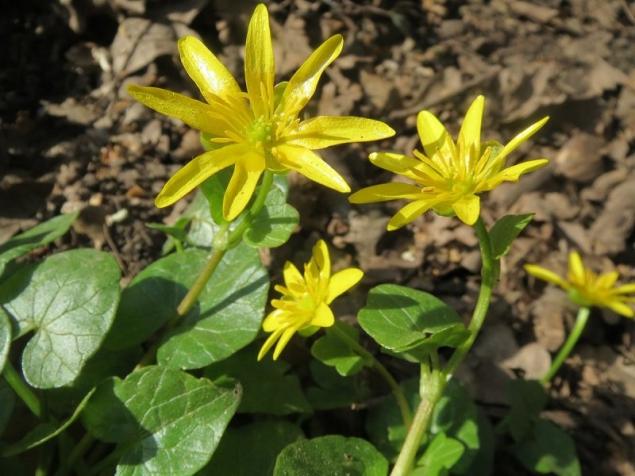
- Cream (Corydalis)
Crests bloom in April-May and bloom from 2 weeks to a month. Above the light green openwork leaves on the peduncles, lilac, blue, purple, pink flowers hover, collected in inflorescence-brush.
Snowdrops are listed in the Red Book and are under the protection of the state, but growing them on your garden plot is not difficult. The first spring flowers multiply quite small (up to 3 centimeters in diameter), covered with yellowish scales bulbs.

They prefer wet and rich in minerals. For good growth of plants, the soil should be unflooded, since due to excess moisture in the soil, galanthus can die.
Do not dig halanthus in the forest or forest park areas, because it is because of the barbaric attitude to these first spring flowers they are recognized as an endangered species. It is best to contact a specialized plant store and buy snowdrop bulbs there.
Despite environmental warnings and administrative responsibilities, people tear snowdrops every year to sell and buy, often bringing home already hopelessly wilted. Do not pick, buy and accept as a gift of flowers.
For residents of private houses and owners of cottages, spring is a special time when the most daring ideas can be embodied on the site, turning the world around into a magical garden, a lush flower garden or an unusual park. Our editors have prepared for you a selection of the most beautiful ideas for the design of spring flower beds.
Perhaps you will be surprised, but in many countries the ordinary dandelion is called yellow ginseng, because its useful properties, it turns out, are no less than that of the real root of life.



























